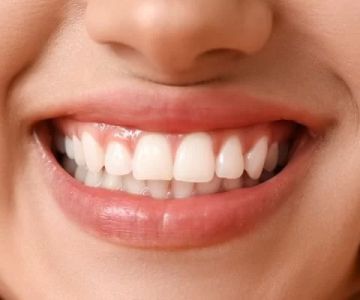
- understanding-why-flossing-matters - The role of flossing in oral health
- how-plaque-affects-your-gums - The connection between plaque buildup and gum disease
- benefits-of-daily-flossing - Why consistent flossing supports long-term gum health
- proper-flossing-techniques - Learning the correct way to floss effectively
- real-life-experiences - Stories showing the difference flossing makes
- common-mistakes-to-avoid - What to watch out for when flossing
- how-family-dentistry-online-can-help - Expert guidance for better oral hygiene
1. Understanding Why Flossing Matters
Flossing is often overlooked, yet it plays a critical role in maintaining oral health. Brushing cleans the surfaces of your teeth, but only flossing can reach the tight spaces between them where food particles and plaque accumulate. These hidden areas are where gum disease begins — long before you notice any discomfort or bleeding. The importance of flossing daily for healthy gums cannot be overstated, as it prevents inflammation, bad breath, and long-term dental complications.
Dental professionals consistently emphasize that flossing isn’t just about removing debris; it’s about preserving the health of your gums and supporting your body’s natural defenses. Healthy gums protect the roots of your teeth and the bone structure underneath, both of which are vital for a stable and confident smile.
2. How Plaque Affects Your Gums
Plaque is a sticky, colorless film made up of bacteria, food particles, and saliva. When not removed daily, it hardens into tartar, which irritates the gums and leads to gingivitis — the first stage of gum disease. Over time, untreated gingivitis can progress to periodontitis, a serious condition that causes gum recession and even tooth loss.
2.1 The Role of Bacteria in Gum Disease
Bacteria thrive in areas that brushing alone can’t reach. They release toxins that inflame the gums, making them bleed or swell. Daily flossing disrupts these bacterial colonies before they form a stronghold, keeping your mouth balanced and your gums resilient.
2.2 The Link Between Oral and Overall Health
Studies have shown that gum disease doesn’t just affect your mouth — it can contribute to systemic conditions like heart disease, diabetes, and respiratory infections. Maintaining clean gum lines through consistent flossing reduces bacterial migration, promoting overall wellness as well as a healthier smile.
3. The Benefits of Flossing Every Day
While brushing twice daily is standard, flossing complements this routine by targeting the remaining 40% of the tooth surface that brushes miss. The benefits go far beyond cleanliness — they extend to aesthetics, comfort, and confidence.
3.1 Preventing Gum Bleeding and Inflammation
Many people assume bleeding gums are normal, but they are actually an early sign of gum disease. Regular flossing strengthens gum tissue, reducing inflammation and preventing bleeding during brushing or eating.
3.2 Fresher Breath and Cleaner Mouth
Food particles trapped between teeth decay over time, producing unpleasant odors. Flossing removes these hidden culprits, giving you fresher breath and a clean-feeling mouth throughout the day.
3.3 Maintaining a Bright Smile
When plaque and tartar accumulate between teeth, they dull your smile and cause discoloration. By flossing daily, you keep your teeth naturally bright and prevent yellowing caused by buildup.
4. Proper Flossing Techniques
Flossing effectively requires the right technique. Improper or rushed flossing can damage the gums or leave plaque behind. Learning the correct method ensures maximum benefit with minimal discomfort.
4.1 Step-by-Step Flossing Guide
Start with about 18 inches of dental floss and wrap it around your middle fingers, leaving a few inches to work with. Gently slide the floss between your teeth using a sawing motion, curving it around each tooth in a “C” shape to clean below the gumline. Avoid snapping the floss, as it can injure delicate gum tissue.
4.2 Choosing the Right Type of Floss
Different floss types suit different needs. Waxed floss works well for tight spaces, while unwaxed floss provides more friction for thorough cleaning. People with braces or bridges can use floss threaders or water flossers for easier access. The dental experts at Family Dentistry Online can recommend products that best suit your oral care routine.
5. Real-Life Experiences from Patients
One patient, a young professional named Emily, visited her dentist after noticing frequent gum bleeding. She admitted she brushed twice a day but rarely flossed. After receiving a simple flossing tutorial and committing to a daily habit, she saw her gums heal within two weeks. The swelling subsided, and her breath improved noticeably.
Another case involved an elderly man with early signs of periodontitis. By combining professional cleanings with a consistent flossing routine, he reversed his gum inflammation and avoided costly periodontal surgery. These stories highlight how small, consistent habits can lead to lasting oral health improvements.
6. Common Mistakes to Avoid When Flossing
Even well-intentioned flossers can make errors that reduce effectiveness or cause harm. Recognizing these mistakes can help refine your technique and maximize results.
6.1 Flossing Too Aggressively
Forcing floss between tight teeth can cause gum injury and discomfort. Always use a gentle, controlled motion instead of pushing hard. Over time, the spaces between teeth will adapt, making flossing easier.
6.2 Flossing Inconsistently
Skipping days undermines progress. Plaque begins forming within hours after eating, so missing even a day allows bacteria to regroup. The key is consistency — make flossing as routine as brushing.
6.3 Neglecting to Replace Floss
Reusing old or frayed floss reduces its effectiveness and can spread bacteria. Always use fresh floss for every session to maintain hygiene and prevent reinfection.
7. How Family Dentistry Online Can Help Improve Your Gum Health
Flossing is simple, but maintaining the habit and knowing what works best for your mouth sometimes requires professional advice. Family Dentistry Online provides personalized dental care and hygiene guidance to help patients develop strong, sustainable routines for lifelong gum health. Their team can identify early signs of gum disease, recommend tailored cleaning methods, and ensure you’re using the right tools.
Regular dental checkups combined with daily flossing create the foundation for a healthy mouth and confident smile. By understanding the true importance of flossing daily for healthy gums, you can prevent disease, enhance your oral hygiene, and invest in a future of lasting dental wellness.







 Polaris Dental Care4.0 (170 review)
Polaris Dental Care4.0 (170 review) Crabtree Valley Dental4.0 (1019 review)
Crabtree Valley Dental4.0 (1019 review) Roybal Comprehensive Health Center: Mendoza Celia DDS5.0 (1 review)
Roybal Comprehensive Health Center: Mendoza Celia DDS5.0 (1 review) Seven Hills Dentistry4.0 (1109 review)
Seven Hills Dentistry4.0 (1109 review) Dental Smiles of Joliet4.0 (268 review)
Dental Smiles of Joliet4.0 (268 review) MDS Dental Solutions, LLC0.0 (0 review)
MDS Dental Solutions, LLC0.0 (0 review) The Importance of Oral Health Education During Pregnancy for a Healthy Pregnancy
The Importance of Oral Health Education During Pregnancy for a Healthy Pregnancy Best Tips for Brushing Your Teeth Properly for Healthy Gums: Essential Techniques for Oral Health
Best Tips for Brushing Your Teeth Properly for Healthy Gums: Essential Techniques for Oral Health Why Skipping Dental Checkups Can Lead to Bigger Oral Health Problems
Why Skipping Dental Checkups Can Lead to Bigger Oral Health Problems Advantages of Porcelain Dental Restorations
Advantages of Porcelain Dental Restorations How Can Diabetes Cause Tooth and Gum Problems? Preventing and Managing Oral Health Issues
How Can Diabetes Cause Tooth and Gum Problems? Preventing and Managing Oral Health Issues Healthy Habits for Promoting Good Oral Health and Hygiene: Tips for a Healthy Smile
Healthy Habits for Promoting Good Oral Health and Hygiene: Tips for a Healthy Smile